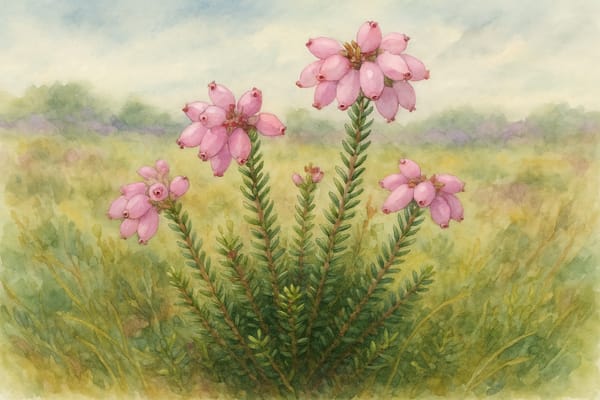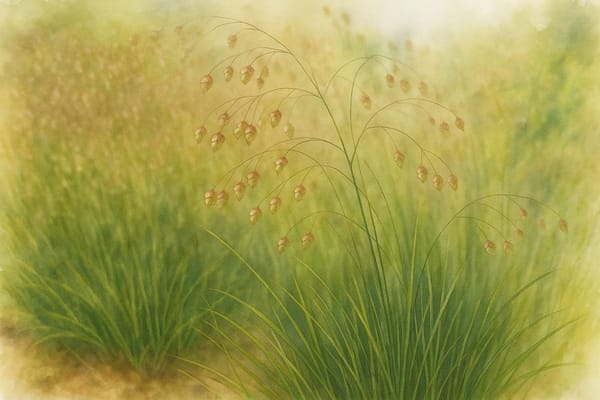The Heathland Bloom of Folklore and Wild Places
Historical and Cultural Significance
With its soft pink bells and cross-shaped leaf whorls, Cross-leaved Heath has long been part of Britain’s heathland folklore and rural life.
A Plant of Sacred Landscapes
Growing in wet heaths, bogs, and moorlands, Cross-leaved Heath is linked to ancient beliefs in sacred landscapes—seen as mysterious places belonging to spirits or otherworldly beings. These untamed habitats shaped myths across Cornwall and Britain, their wildness mirrored in the plant’s resilience.
Practical Uses in Rural Life
Traditionally, heath plants like this were used for thatching, broom-making, bedding, and basketry. In some regions, including Cornwall, yellow dyes were extracted from heather species for coloring wool and cloth.
Folklore and Symbolism
Cross-leaved Heath was thought to offer protection against evil spirits and symbolized resilience and good fortune. Its ability to thrive in poor, acidic soils made it a token of strength and endurance in folklore.
Ecological and Cultural Heritage
An indicator of ancient heathland, this species reflects centuries of traditional management—grazing, burning, and cutting. Heathlands are celebrated in British art and conservation as symbols of wild beauty and rural heritage.
Cornish Context:
Common on Cornwall’s moors, bogs, and coastal edges, Cross-leaved Heath is a living link to the county’s landscape history, blending natural beauty with rural tradition.
Growing Cross-leaved Heath in Coastal Gardens
Adaptable, hardy, and naturally beautiful, Cross-leaved Heath thrives in acidic, moist soils—perfect for wild coastal borders or naturalistic plantings.
| Requirement | Details |
|---|
| Light | Full sun to partial shade |
| Soil | Acidic, moist, sandy or peaty, well-drained |
| Water | Keep moist; tolerates short dry spells once established |
| Salt Tolerance | Moderate; suited to breezy coastal spots |
| Hardiness | Fully hardy in the UK |
Care and Cultivation Tips
- Site Selection:
Best in open, sunny areas with moist, acidic soil—ideal for bog gardens or heathland borders. - Planting:
Plant in autumn or spring, spacing 12–18 inches apart. - Watering:
Keep consistently moist. Use rainwater if possible, as tap water may be too alkaline. - Pruning:
Lightly trim after flowering to maintain shape and encourage bushy growth. - Fertilizing:
Avoid fertilizers; prefers nutrient-poor soils. - Pests & Diseases:
Generally problem-free but ensure good drainage to prevent root issues.
Coastal Garden Notes
- Wildlife Value:
Supports bees, moths, and pollinators—great for wildlife-friendly gardens. - Low Maintenance:
Once established, requires little care and helps stabilize sandy or acidic soils.
Summary
Cross-leaved Heath blends folklore, practical heritage, and ecological value. A symbol of protection and resilience, it thrives in acidic, moist soils with minimal care—bringing a touch of Cornwall’s wild beauty to coastal gardens and naturalistic settings.











